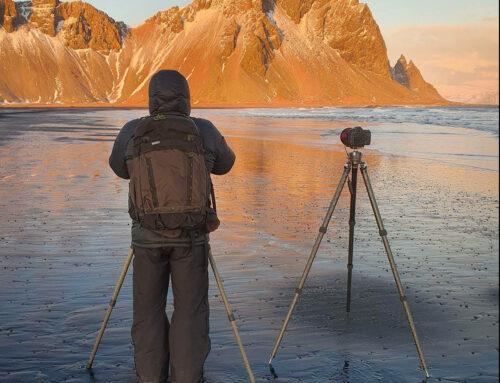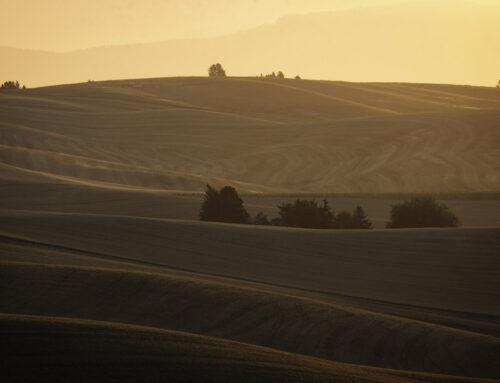Tripods always seem to be a hot topic of conversation amongst photographers. Sort of like camera bags, folks are always searching for the “right” tripod to fit their style of shooting, or the “right” combination of features for their preferences. “What type of tripod should I get?” is to be one of the most popular questions I get from workshop attendees and other clients.
Whenever I get that question, a great quote from Bill Fourtney comes to mind…..
“There are two types of tripods…..those that are easy to carry, and good ones” That usually produces a few chuckles from everyone, but there is a lot of truth in that statement.
I often think back about my progression through tripods and to be honest, it is one of those things that “if I knew what I know now about tripods”, I would have done things much differently when I first started out. Years ago when I started to shoot seriously, I too was searching for the perfect tripod. I burned through several different tripods and ballheads before I finally settled on a good tripod/head system that I have been using for many years. I think we’ve probably all been there…..spending $150 on a tripod and using that for a bit. Getting frustrated with it. Then spending $300 to buy a “better” one. Then spending $500 to buy an even better one. The cost of tripod/heads was one of those things that really was a bit shocking to me as travelled on my tripod journey and the mental block of spending big bucks for a tripod was one of the hardest things to overcome as I invested in my photographic kit. I wish I would have just scraped the money together to buy the best I possibly could and skip all of the trial and error, and sunk cost, of the various tripods I burned through.
Eventually i broke through my mental block and spent the money I needed to to buy my preferred tripod/ballhead set up. Since that day I’ve been using Gitzo tripod legs and RRS ballheads and I don’t really want for anything more. It does what I need it to do and works the way I want it to work. I’ve got two different setups right now, a lighter weight set of Gitzo legs and an RRS BH40 head, then heavyweight legs and the RRS BH55 head. 99% of the time I use the heavier combination to do everything possible to extract the best image quality I can.
These setups are not cheap, heck no, but look at the money we have invested in camera bodies and lenses! I can’t tell you how many times I’ve seen $8-10k worth of camera gear plunked on top of a flimsy $200 tripod! Just like in high-end audio reproduction (home stereo) everything in the signal path needs to be optimized to extract the best end result. In photography, the bodies, lenses, tripods, filters and technique are all in the “signal path” to create the best image, so it’s important to address each component of the path to make sure it is the best it can be for what you want to do.
By now you’re probably saying, “OK, so what makes a good tripod?” I’ll just share a few of my thoughts based upon a lot of trial and error, advice from other professionals, observations of other photographers, etc. Here are some things you need to think about when looking for a new tripod (or evaluating your existing one)
- Rated to support your equipment – Most tripods and ballheads come with a manufacturer recommendation about what kind of load they can support. make sure your set up can support your camera/lens weight. I prefer to have “overkill” in this area, a more supportive tripod that what weight my camera/ lens is. Why? because of the next point….
- Reduced vibrations – Some materials are better than others at reducing vibrations and as you know, vibration(shaking) can make your image blurry. Having a super sturdy tripod minimizes the chance of vibrations.
- Height – Can go tall and short enough to cover the range of what and how you shoot. My tripod goes from 8′ down to ground level as I like to shoot from many different height perspectives.
- Ease of use – Now this one is personal preference and one that each of us needs to decide for ourselves.
- How easy is it to extend / collapse the legs? Think about things like when your in the darkness, or, when you have gloves on.
- Flip lock or twist lock leg adjustment.
- Is it intuitive for me to use?
- Am I going to hike or travel on airplanes?
- How serviceable is it? In the field or at home?
- How easy is it to make small adjustments to the height as I’m composing my image?
- Does the ballhead transition from landscape to portrait orientation?
- What kind of special plates do i need to use the ballhead? Can I get easy replacements if I’m traveling and need a new one?
Ease of use is probably the biggest factor in happiness with a tripod. Unfortunately it’s also one of those things that you won’t know unless you use it in a real world situation. I can’t tell you how many times I’ve seen people struggle and struggle with their tripods, trying to get them adjusted to the right height, set up on un-even ground, or just collapse them to put back in the car. So much frustration and anger can be directed at the lowly tripod. Why? Because they are not easy to use and aren’t the right tool for the job. Too often I see people working to compose and shoot images hand-held with their tripod standing next to them and when I ask them why, it’s because they got frustrated with it and gave up trying to use it!!!
Now, my last point is a bit of a “soap box” for me and I hope I don’t offend too many of you…..
JUST SAY NO TO CENTER POSTS!!!!!!
The premise of a tripod is to have 3 legs to create a stable platform. Roger that. So why would you then put a monopod on top of a tripod? One point of contact, one support beam, between your camera and a stable platform. If there is one little gust of wind, that center post starts rocking back and forth to blur your image. If you press the shutter button, your hand movements will cause shake/blur as well. There is just no logical reason why we should de-stablize our platform by using a center post. Center posts seems like a good idea in the store and they are easier to use in the field to make height adjustments, but if we are serious about our image capture, they should not be used. The convenience is not worth the loss in image quality. OK, rant over 🙂
The best advice I can leave you with is to try as many different tripods and ballheads as you can. If you’re out with other photogs, ask them what they like or dislike about their tripods. Honestly evaluate your needs. Buy more than what you think you’ll need, you’ll be happier in the end.
Even polar bears value a good tripod
(originally posted 11/19/16)





Leave A Comment